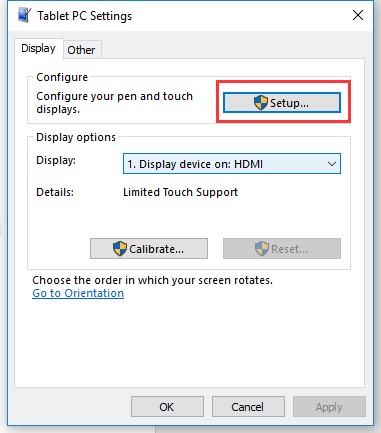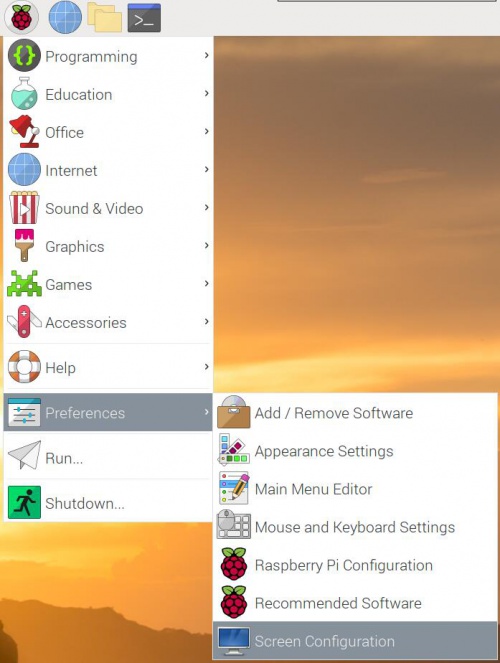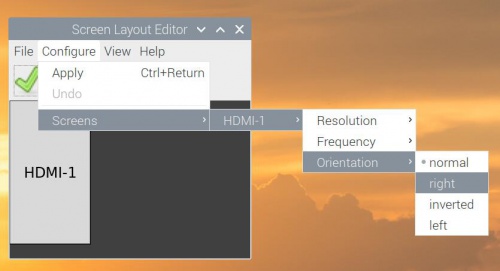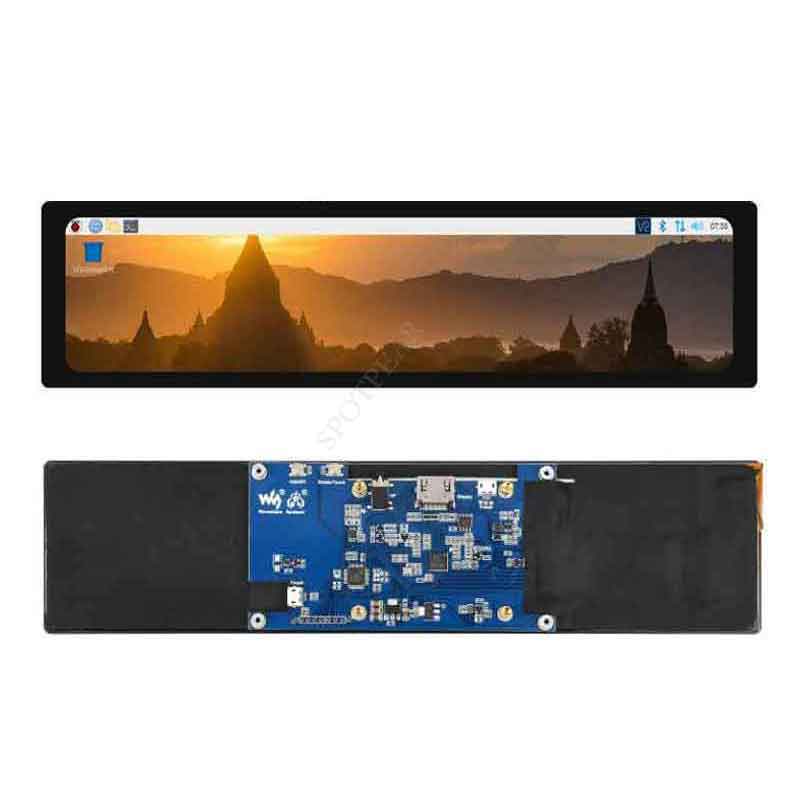- sales/support
Google Chat: zj734465502@gmail.com
- sales
+86-0755-88291180
- sales01
sales@spotpear.com
- sales02
dragon_manager@163.com
- support
tech-support@spotpear.com
- CEO-Complaints
zhoujie@spotpear.com
- sales/support
WhatsApp:13246739196
Raspberry Pi 11.9inch HDMI LCD User Guide
Introduction
This is a 11.9inch Capacitive Touch Screen LCD, IPS screen, which supports Raspberry Pi and can also be used as a computer monitor.
Features
- 11.9inch IPS screen, 320x1480 resolution, HDMI/USB interfaces.
- Toughened glass capacitive touch panel
- Supports popular mini PC such as Raspberry Pi, Jetson Nano
- Used with Raspberry Pi, supports Raspbian / Ubuntu / Kali and Retropie, single touch and driver free.
- Using as a computer monitor, it supports Windows 10 / 8.1 / 8 / 7, five-point touch and driver free.
- Touch orientation is adjustable with button.
- HDMI audio input, 3.5mm headphone/speaker jack.
Working with PC
This LCD supports Windows 7/8/8.1/10 when working with PC via HDMI interface.:
1. Connect the TOUCH interface of LCD to the USB interface of PC. Waiting for a moment, The touch will be recognized by Windows automatically.
2. Connect the HDMI interface of LCD to the HDMI port of PC. About 10s later, you can see that the LCD display properly.If you need to output sound, you can connect to 3.5mm headphones through HP audio output port.
Note:
1) When the computer is connected to several different displays at the same time, only this LCD can be used to control the cursor on the main display, so we recommended to set this LCD as the main display.
2) Some of PC cannot support HDMI screen Hot Plug. In this case, restart the PC can solve.
3) Sometimes LCD will flicker because of undersupplying from USB cable of PC. You need to connect an external power supply (5V/2A) to DC port.
Orientation setting
- Display orientation
- You can adjust the display orientation by display setting.
- Touch orientation
- The physical button on the backside can be used to adjust the orientation of touch. You can hold it for 5s to change.
- You may need to test multi times for the correct orientation.
Touch Settings on Win 10 PC
Some users want to connect more than one display to their PC. Here we talk about how to setting the touch to make the touchscreen control its screen separately.
- Connect touchscreen to PC. Here we use a standard PC monitor and connect a 7inch HDMI LCD (C) for example. We make the monitor as the main screen and the touchscreen as a secondary screen.
- By default, The touchscreen can only control the cursor on the main screen. Here we set it to control the secondary screen.
- Open Control Panel and search Tablet PC setting on the control panel and open the tool.
- Click button "Setup..." to set the touchscreen
- After clicking the setup you can find that it is prompt on your first screen with white color background and other screens are white.
- If we want the touch of the touchscreen to control the desktop of the touchscreen itself. Just press Enter key to pass the first screen. And the second screen, when you find that the black text is displayed on the touchscreen, just touch the center of the touchscreen to finish this setting.
- After this setting, the touch on the screen will just control this touchscreen even though it is not the main screen.
Note:
1 If the first screen and the second screen are touchscreens as well, you can touch them when the text is displayed on the screens. Then you can find that all the touchscreen can work.
2 This method is just tested on win 10 PC.
Working with Raspberry Pi
This LCD supports Raspbian/Ubuntu mate/Kali/Retropie/Windows 10 IoT Core.
When working with Raspberry Pi, you should set the resolution of the LCD by yourself, or else the LCD screen will not work. For more detail information, please read the following section.
Please download the latest version of the image on the Raspberry Pi official website.
- 1) Download the compressed file to the PC, and unzip it to get the .img file.
- 2) Connect the TF card to the PC, use SDFormatter.exe software to format the TF card.
- 3) Open the Win32DiskImager.exe software, select the system image downloaded in step 1, and click‘Write’ to write the system image.
- 4) After the image has finished writing, open the config.txt file in the root directory of the TF card, add the following code at the end of config.txt, then save and quit the TF card safely.
max_framebuffer_height=1480 max_usb_current=1 hdmi_group=2 hdmi_mode=87 hdmi_timings=320 0 80 16 32 1480 0 16 4 12 0 0 0 60 0 42000000 3
You must make sure that there are no spaces on either side of the equal sign.
- 5) Insert the TF card into the Raspberry Pi
- 6) Connect the Touch interface of the LCD to the USB port of Raspberry Pi.
- 7) Connect the HDMI interface of the LCD to the HDMI port of Raspberry Pi and then power on the Raspberry Pi, it can display normally after waiting for about a few seconds.
Note:
- If you are using Pi4 or higher, the HDMI cable needs to be connected to the HDMI0 port of the Raspberry Pi (near the power port)
- Resolution of Ubuntu Mate OS or Windows 10 IoT Core OS can also be set properly by editing config.txt.
- For Pi Zero / Zero W: if you've used an SD card on a Pi 3 and then attached the card to the Pi Zero, the touch screen often doesn't work. In such cases, you have to write a fresh system image to the SD card. The first boot up must be done on the Pi Zero but not Pi 3, due to initialization for a corresponding device.
- The screen is displayed in portrait mode by default. For ease of use, the screen display direction can be adjusted, please read the following section.
Orientation setting(Working with Raspberry Pi)
Display orientation
If you are using the Raspberry Pi4, you can use the following method to rotate the display direction.
- 1.Open Screen Configuration.
- 2.Set the rotation as shown below.
- 3.And then after rotating the touch direction, the LCD will work normally.
If you are using Pi3+ or an older version, you can rotate the display direction in the following ways:
- 1. To rotating the display, you can append this statement to the config file
display_rotate=1 #1: 90; 2: 180; 3: 270
- 2. Reboot the Raspberry Pi
sudo reboot
Touch orientation
After the display is rotated, the position of touch is incorrect because the touch doesn’t change with the display angle. So the touch also needs to be modified. You can hold the following button for 5s to change the touch direction.
【Note】When using the new system, it may cause touch reverse errors. At that time, you need to press and hold "Rotate Touch" to rotate.
Keys Introduction
- On/OFF: Turn on/off the backlight.
- Rotate Touch: Hold it for 5s to change the touch orientation.
Others
Disable power saving.
If you want to keep the display turning on all the time, you can disable the power saving function.
Modify file lightdm.conf
sudo nano /etc/lightdm/lightdm.conf
Find the [SeatDefaults] option and uncomment the line"xserver-command", modify it as below:
#xserver-command=X
Modify this code to
xserver-command=X -s 0 -dpms
- -s # –Disable the display protecting.
- dpms Disable power saving.
Reboot
sudo reboot
Turn on/off HDMI output
You can use the following commands to disable/enable the displaying.
vcgencmd display_power 0 vcgencmd display_power 1












